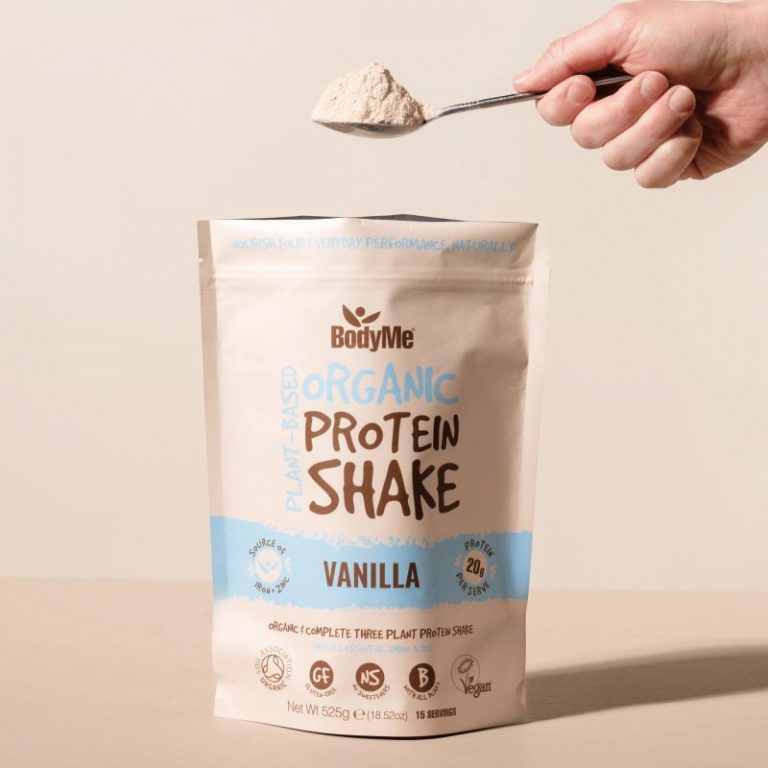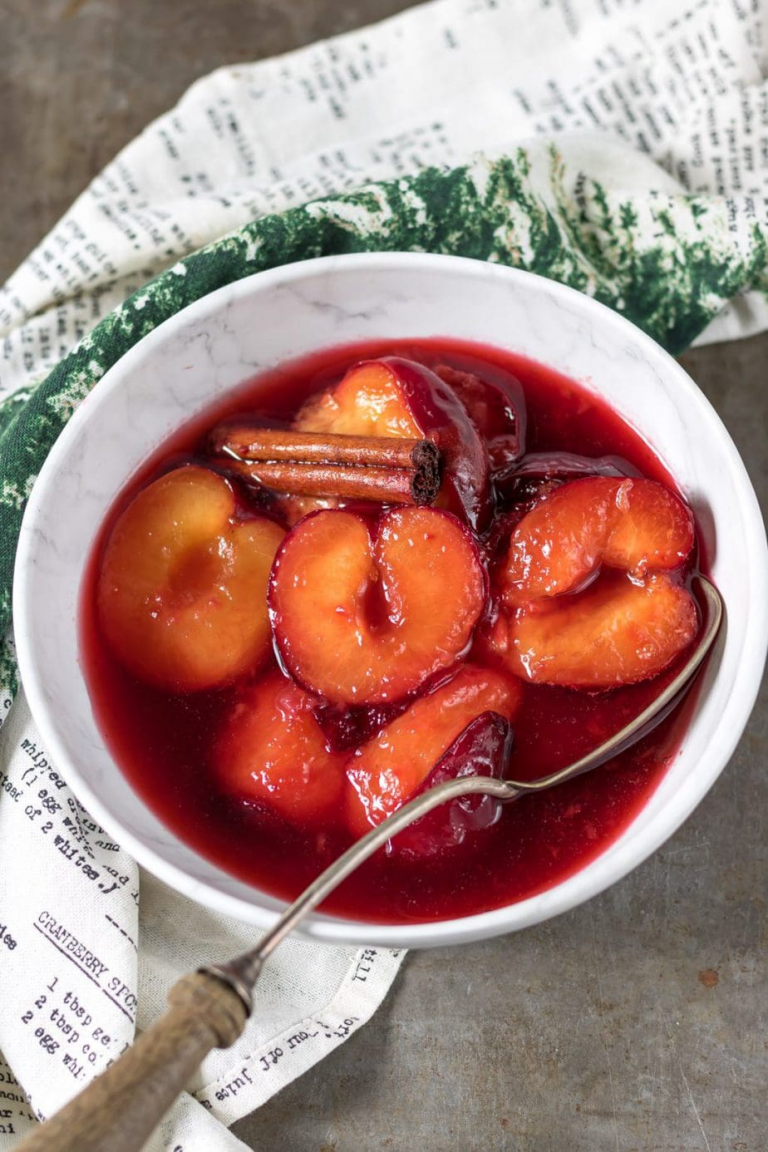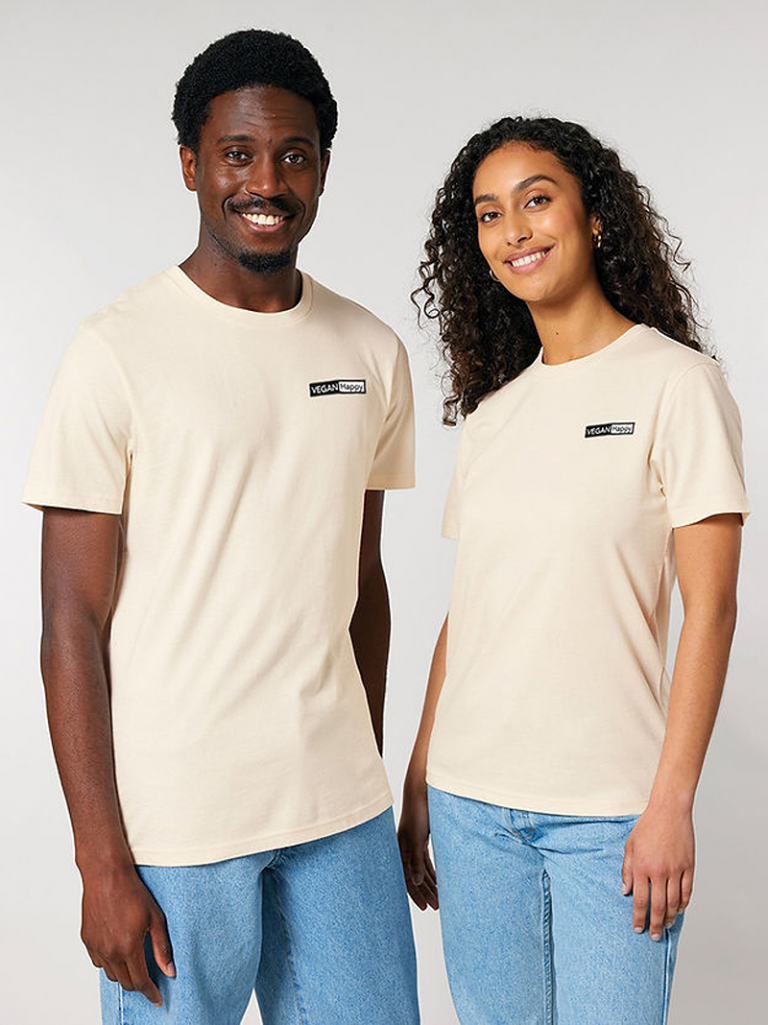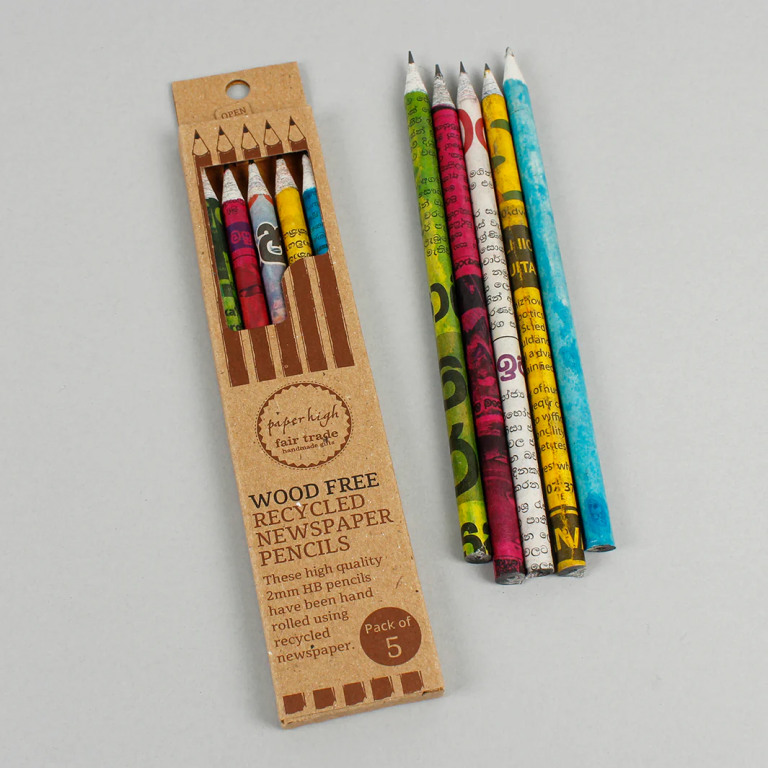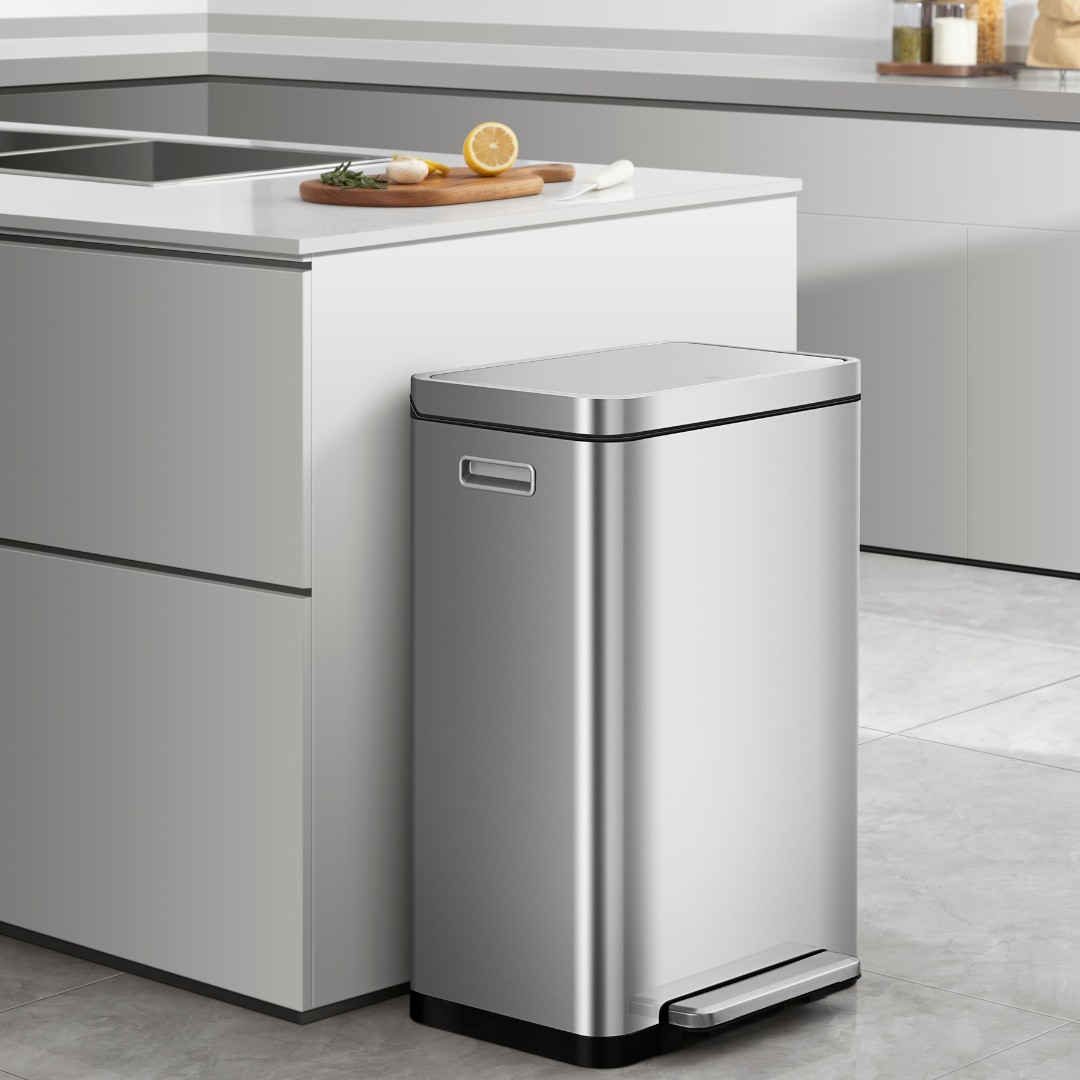
Recycling at home should not feel like a chore. With UK households producing over 27 million tonnes of waste each year, small changes in the kitchen can have a big effect across the country. EKO Home brings style and order to everyday sorting, helping households recycle more and send less to landfill.
These bins look good and work hard. They group plastics, paper, and glass with little fuss, so the whole family can get on board. If you want a tidy kitchen, fewer odours, and an easier way to recycle, EKO Home has a bin that fits.
Use with compostable bin liners (just bin, they are industrially composted at the tip, not in your garden!
Why EKO Home Recycling Bins Are Better
EKO bins are built for everyday life. Many models use recycled materials, often up to half the content, which lowers the environmental footprint from day one. Strong shells, metal pedals, and tight lids give a reassuring feel that cheaper plastic options rarely match. That means fewer replacements over the years, and money saved.
Design is practical and smart. Dual and triple compartments sort recycling without a mess of loose bags. Slim profiles slide beside a fridge or under a counter, so you gain sorting space without losing floor space. Taller units fit well in utility rooms or garages for households that produce more recycling. Add clear labels or colour-coded lids and everyone knows what goes where.
The UK recycling rate sits around 45 percent. Personal effort still matters. A well placed bin can lift your own rate by removing friction. For example, a family might keep a two-compartment unit in the kitchen for mixed recycling and general waste, then a small caddy near the back door for glass. Fewer steps, fewer excuses.
Cleaning is simple too. Fingerprint-resistant finishes keep surfaces looking clean. Removable inner buckets make bag changes quick, and many lids include soft-close hinges to stop banging and reduce smells. Some models include odour filters or compartments for deodorisers, useful for food packaging days.
Real life scenario: busy weekday evenings often end with packaging stacked near the sink. With an EKO unit that has distinct compartments, the habit becomes automatic. Plastic trays in the blue-lidded section, paper sleeves in the other, soft-close lid down. The bin guides the action, not the other way round.
Durable Designs Built for Everyday Use
Daily knocks happen. Children brush past, pets nudge, and shopping bags scuff. EKO bins, including ranges like Harmony or Prime, use solid construction with reinforced hinges and sturdy handles to handle this pace. Many finishes resist fingerprints and smears, so you do not need to polish the bin every time you cook.
The durability pays off. A cheaper bin might crack or warp after a year, then need replacing. A robust EKO unit can last for years with basic care. That is less plastic waste and better value over time. With many models using significant recycled content, you also cut the impact of the product itself.
Example: a 40 to 60 litre dual-compartment model in a busy family kitchen gets a few thousand pedal presses a year. A reinforced pedal and steel body keeps working without wobble. Handles inside the buckets help lift heavy loads on recycling day without strain.
Smart Sorting to Boost Your Recycling Rate
Sorting should be obvious at a glance. EKO’s colour-coded lids and clear labels guide decisions in seconds. No guesswork, no backtracking. This simple nudge helps households meet local council rules on separation, which reduces the risk of contamination or missed collections.
Small flat? Modular, stackable units allow vertical sorting without sacrificing floor area. One box for paper, one for cans, one for glass. Labels face out, lids open easily, and the system grows as your needs change. Keep the set near the kitchen door to speed up drop-offs to outdoor bins.
Tip for consistent sorting:
- Keep the most used compartment closest to your food prep area.
- Add a short label on the lid, for example, Plastics only.
- Empty on the same days each week, tied to your council collection cycle.
Choosing the Right EKO REcycling Bin
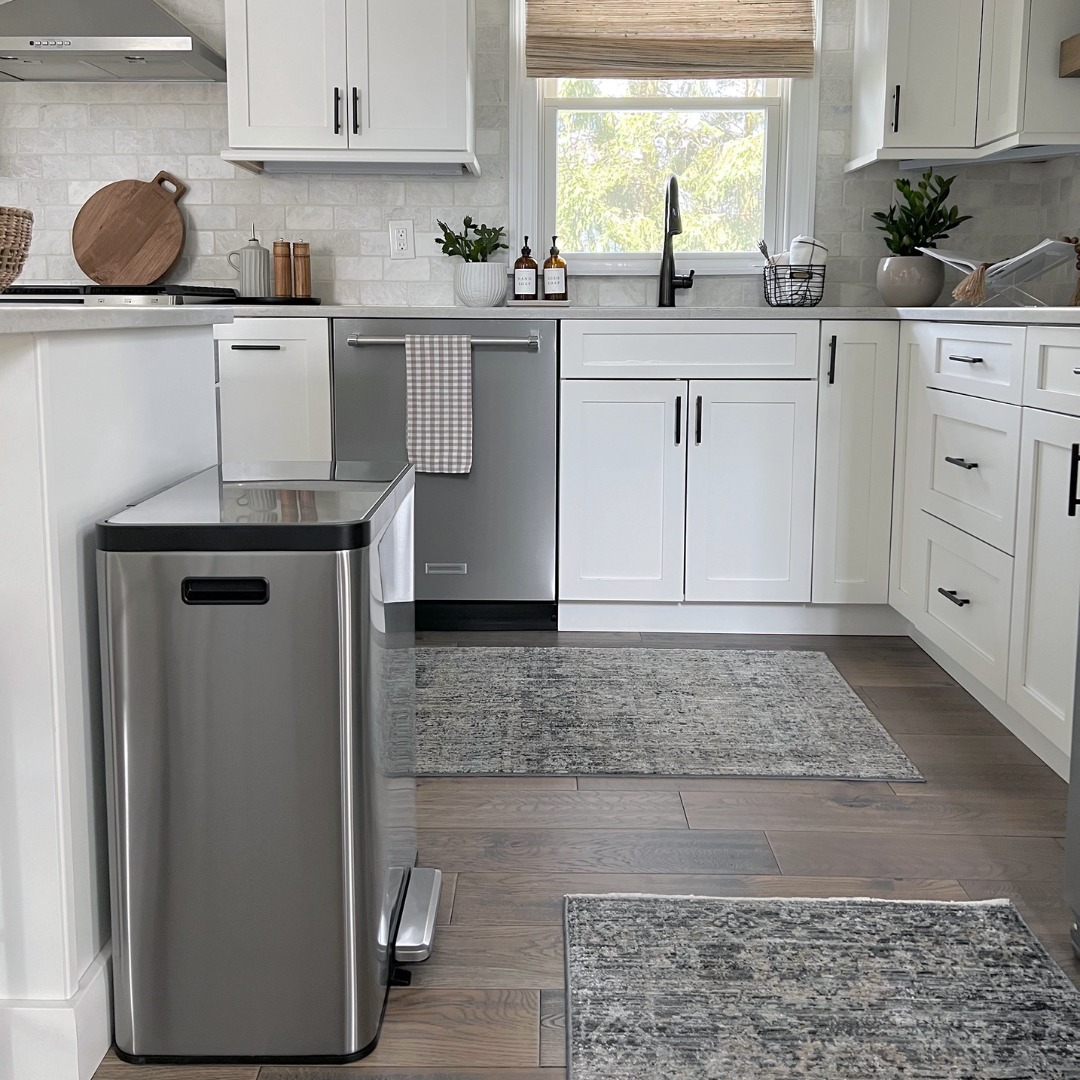
- Compare capacities next to the space you have, not just on paper.
- Look for fingerprint-resistant surfaces in stainless steel or coated finishes.
- If you want flexibility, consider a modular system rather than a fixed two-in-one bin.
- For busy homes, prioritise soft-close lids and sturdy pedals to cut noise and wear.
- If you separate food waste, choose a model with a dedicated caddy or plan space for one.
Top Models to Consider
- Slimline units for tight spaces, ideal under a counter or beside a dishwasher.
- Freestanding dual or triple bins for larger households.
- Compact 20 to 30 litre options for flats or home offices.
- Medium to large 40 to 60 litre models for family kitchens and utility rooms.
Tips for Choosing the Right Bin Size
- 20 to 30 litres: best for singles, couples, or secondary rooms.
- 30 to 45 litres: suits small families or shared flats.
- 45 to 60 litres: suits larger families or those who batch-cook and recycle more.
Think about where the bin will live. A slim model fits beside a fridge, while a wider unit suits an open-plan space. Set a clear budget, then use current offers to step up one size or add extra features. Most EKO designs work with standard liners. Check dimensions and liner compatibility before you buy to avoid bag slippage.
How to Set Up and Maintain EKO Bins
A good setup makes recycling easy from day one. Most EKO models arrive ready or near-ready to use. Place the unit where you naturally move when cooking or tidying, then label compartments so guests and children can follow the system.
Maintenance is simple. Wipe down the exterior weekly with a soft cloth and mild soap. Empty and rinse inner buckets when you change liners. Avoid harsh chemicals that can damage coatings. This basic routine keeps the bin fresh and extends its life, which saves resources and money over time.
Quick Setup for Immediate Use
- Unbox and remove protective films.
- Fit any supplied deodoriser or filters.
- Insert liners, folding edges neatly under the bin rim.
- Add labels to lids or inner buckets for clarity.
- Place the bin near your food prep area, or by the door that leads to outdoor bins.
Most models take under 10 minutes to set up, and you do not need tools. If your council collects glass separately, place a small companion caddy nearby for bottles and jars.
Simple Cleaning Routines
- Wipe exterior with mild soap and warm water, then dry with a soft cloth.
- Rinse inner buckets with warm water, then air-dry fully before replacing liners.
- Remove sticky labels with a little warm soapy water, or use white vinegar on residue.
- For stainless steel, avoid abrasive pads that can scratch the finish.
Select models include antimicrobial linings that help reduce odour build-up between cleans. Replace charcoal filters or deodorisers as directed, usually every few months, to keep the bin fresh.
EKO Home Food Waste Caddies
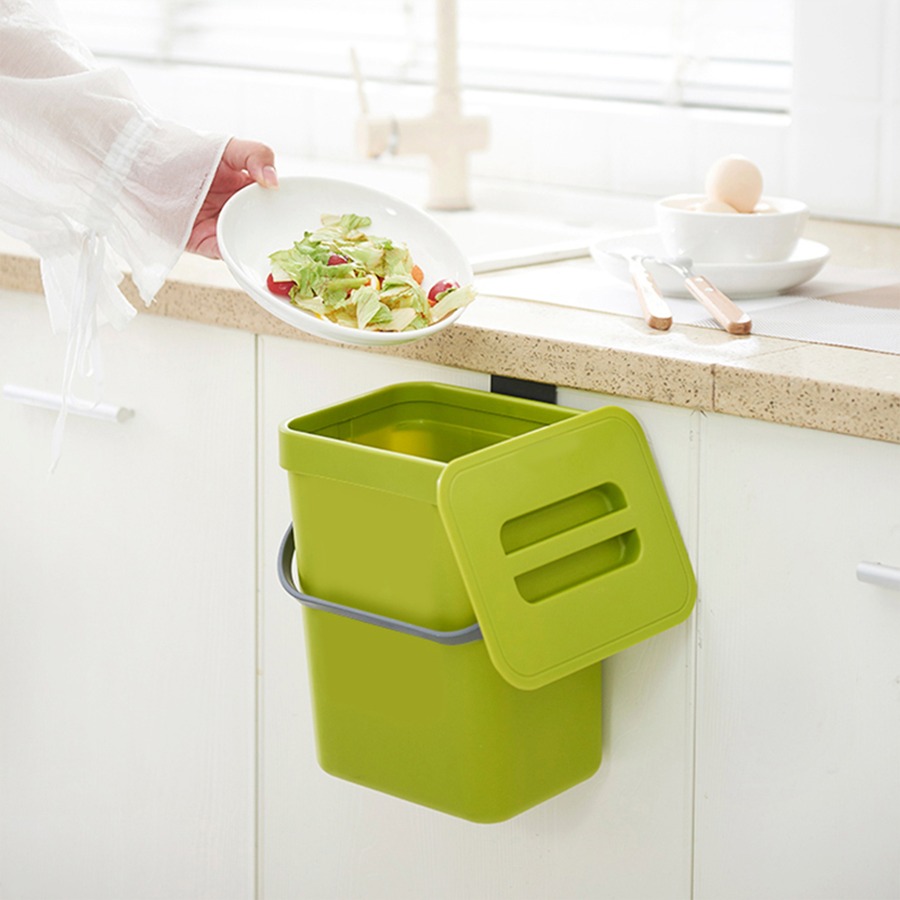
EKO Food Waste Caddies can also be used as normal bins, and hooked over cabinet doors, or hung on walls, or just sit on the counter. The lid can be opened from the front or bag, and keeps bin bags firmly hidden. The detachable lid is also easy to clean.
It’s best to just bin allium scraps (onion, garlic, shallots, leeks, chives) and citrus/rhubarb scraps, as acids may harm compost creatures. Also don’t bin more than a little caffeine (coffee grounds or tea leaves) as excessive caffeine can harm worms – add dry shredded cardboard to balance acids, and bin the rest).

